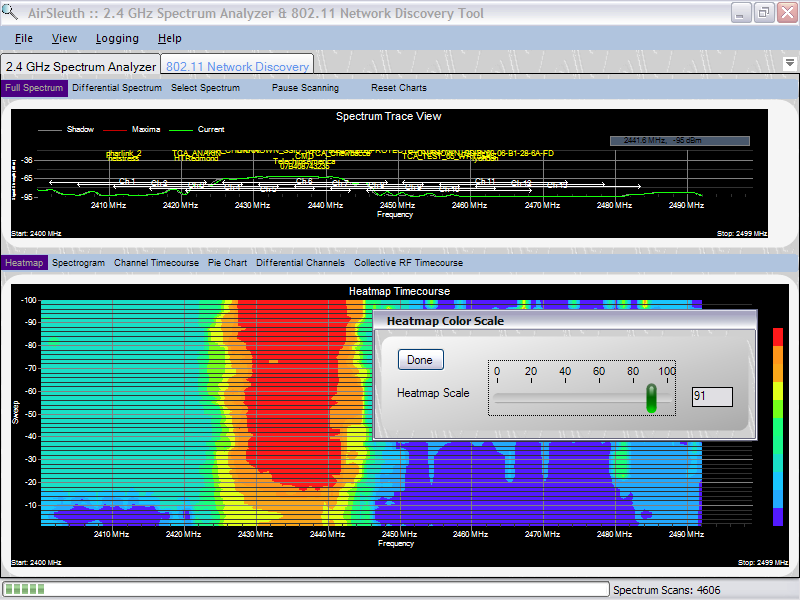
The 'Heatmap Timecourse' view is also known as a "waterfall" graph. It is a 3-dimensional representation of the data, where the X-axis is the frequency scale, the Y-axis is a time scale, and the "Z-axis" is the color scale. Each horizontal line in the Heatmap chart displays the signal strength (as a color) as a function of frequency as measured over the time period of one scan. That is, with each scan (or sweep) a new row is added at the bottom of the Heatmap chart. The color legend to the right shows that stronger signals will appear red and weaker signals will appear blue.

As with most of the charts, right-clicking the mouse button displays a context-sensitive, popup menu. For this chart the choices available from the popup menu include the following:
Export Data was discussed in a previous topic -- Full Spectrum Trace View. The choice to 'Rescale Heatmap' is unique to this chart.
The Heatmap Color Scale slider control can be used to rescale the signal strengths to better spread them across the range of colors that are used. This is useful when all the signal strengths are large and the Heatmap appears mostly red or when all the signal strengths are low and the Heatmap appears mostly blue. For the best visual effect, ideally you'd like the peaks (strong signals) to appear red and the valleys (weak signals) to appear blue. But sometimes even the valleys have large signal strength values or the peaks have low signal strength values. This control is useful in remapping the color legend to better make use of the colors and how they are spread across the peaks and valleys of the signal strength values.

Copyright © 2008, Nuts About Nets, LLC